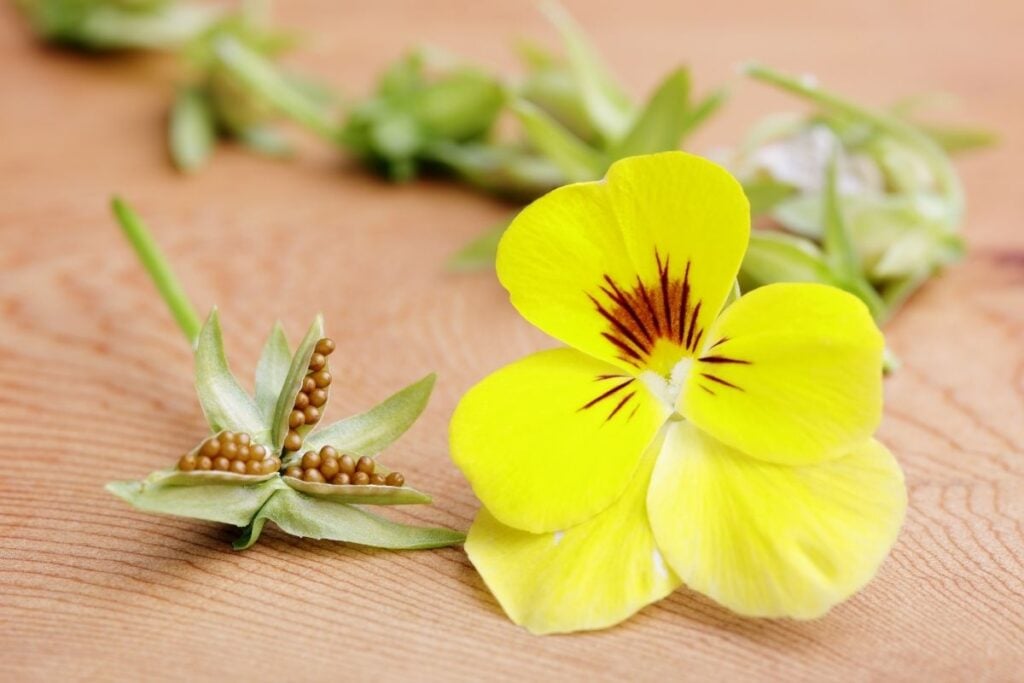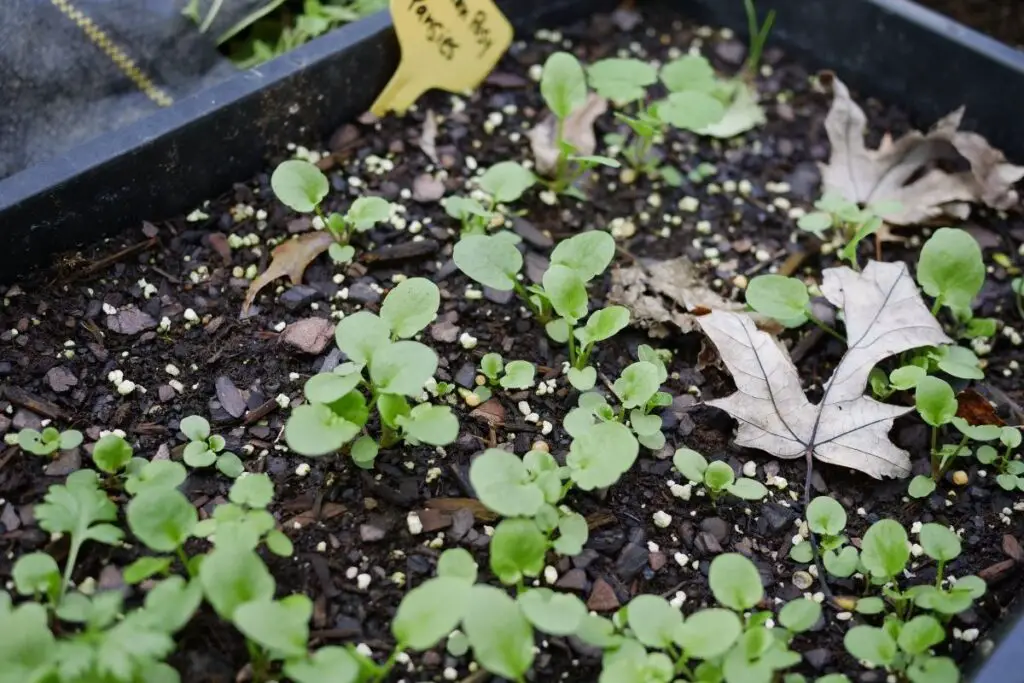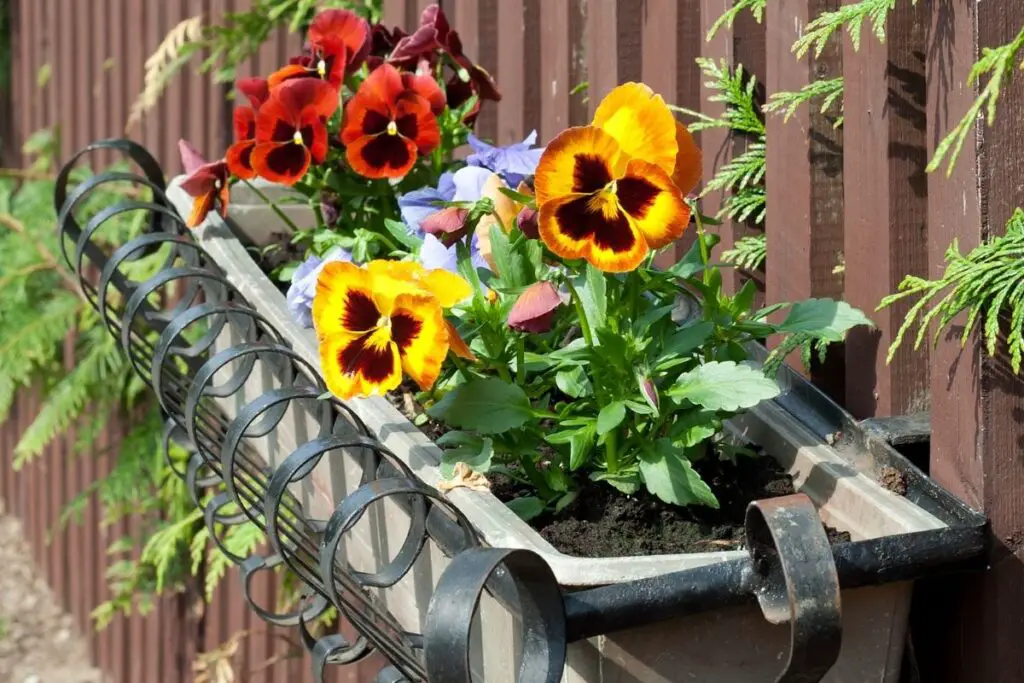Pansies are the long-time favorite flowering plants that are perennials but sometimes treated as annuals. You can grow pansies from seeds instead of buying them from the nursery. Although growing pansies from seeds is a time-consuming process, they are still relatively easy to grow.
Growing pansies from seeds is an easy process and an economical way of growing different species and even hybrids. But a common question that comes to our mind is when should pansy seeds be planted?
In general, if you live in the south of USDA zone 7, then pansies bloom well during fall, so you must start the seed indoors during spring. And for the rest of the region, pansies do well during spring as the temperature is ideal, so the seeds need to be started indoors during the fall season.
You can plant the pansy seeds both indoors and outdoors in pots or garden beds, respectively. Because pansy seeds grow best when they receive partial shade, starting them indoors is a good option.
But, if you want to grow the seeds in your garden bed, you have to prepare your garden bed in a way where the seeds can grow without getting damaged.
Today’s article will discuss when and how to plant pansy seeds wherever you live. We will also cover how to take care of them, and other essential factors while growing pansies with seeds.

Growing Pansies from seeds
A seed starts germinating when the first growth of the roots and shoot starts pushing through the seed coat, and the plant begins to sprout.
Nowadays, gardeners prefer buying matured seedlings from the nurseries to grow pansies, and this germination knowledge is somewhere lost.
Starting seed germination is a simple process. You will be able to accomplish both indoors and outdoors, considering the preferences and time of the year. Along with that, we will also get accustomed to the germination process.
Starting pansy seeds indoors
If you want to grow pansies with seeds, starting them indoors will give you an experience of an indoor gardening project.
Looking for gardening supplies? We have tested 100's of products before recommending them to you guys. Check out our best pick below:
| Image | Gardening Supplies | Best Price? |
|---|---|---|
 Top
Top Top
Top | Raised Garden Bed Kit | Check On Amazon |
 | XLUX Soil Moisture Meter, Plant Water Monitor, Soil Hygrometer Sensor for Gardening, Farming, Indoor and Outdoor Plants, No Batteries Required | No Results |
 Top
Top Top
Top | 82 Pcs Garden Tools Set and Extra Succulent Tools Set | Check On Amazon |
 | Joeys Garden Expandable Garden Hose with 8 Function Hose Nozzle, Lightweight Anti-Kink Flexible Garden Hoses, Extra Strength Fabric with Double Latex Core, (50 FT, Black) | No Results |
 Top
Top Top
Top | Dual Chamber Compost Tumbler | Check On Amazon |
 Top
Top Top
Top | Sunnyglade Plant Stakes | Check On Amazon |
 Top
Top Top
Top | Organic Cold Pressed Neem Seed Oil | Check On Amazon |
 Top
Top Top
Top | Mighty Mint Gallon :-Insect and Pest Control Peppermint Oil | Check On Amazon |
 Top
Top Top
Top | Scotts DiseaseEx Lawn Fungicide | Check On Amazon |
 Top
Top Top
Top | Jacks Classic 20-20-20 All Purpose Fertilizer | Check On Amazon |
 Top
Top Top
Top | 30,000 Seeds Pollinator Attracting Wildflower Mixture | Check On Amazon |
 Top
Top Top
Top | Survival Vegetable Seeds Garden Kit-Over 16,000 Seeds | Check On Amazon |
When to start?
Growing pansies during the late winters will improve the growth, and you will be able to enjoy the early production of flowers in the pansy plants.
The best time to grow pansy seeds indoors is six to eight weeks before transplanting them in the garden bed.
In zones of eight or in warmer zones, take some time to seed them so that you can plant the pansies in the fall months when the weather starts to cool down.
The plants will bloom during the fall, winter, and spring seasons before being killed by the hot summer.
In cooler zones like zones five, sow the pansy seeds three to four weeks before the last frost date.
If you do so, the plant will produce flowers throughout the spring and summer seasons and even during the fall months until they get killed by harsh winter.
Germination and after-seeding care
The best option to plant pansy by seed is to sow them in individual pots to provide more space for sprouting and root growth.
Another good option is starting the pansy seeds using soilless mixes. This means making potting mix without soil that consists of vermiculite and peat.
Garden soil might contain organic matter or fertilizers that can burn or rot the developing roots, so using a soilless mix is better.
Sow the pansy seeds on the top of the soilless medium and then cover them with a light layer of about 1/8 inch of the mix. Press the medium gently to let it settle.
Then slowly water the mixture in a way that the seeds are not disturbed. Please keep them in a place where they will receive partial shade. Do not expose them the direct sunlight as the excessive heat of the sun may harm the seeds.
Since pansies always prefer cool weather conditions, you can even cover your pot or container with a plastic bag to preserve moisture. This plastic bag will even protect your pansy seeds from the harmful rays of the sun.
Make sure that the soilless medium remains evenly moist but not soggy. Mist the soil throughout the germination process.
Your pansy seeds will take some time to germinate. So you won’t be seeing anything for about ten to twelve days. It will take ten to twelve weeks to complete the entire germination stage.
Once you start noticing leaves, water them will water-soluble fertilizers with the strength of one-fourth.
You can use a fertilizer containing an N-P-K ratio of 24-8-16. Mix the fertilizer with one gallon of water. Apply this solution to the soil once a week, replacing it with normal water. Water the soil with regular water for the rest of the days in a week.
Once your pansies are matured, it is time for transplantation. Gently dig out the plants, and plant them in the garden bed.
Also, make sure that the garden soil bed is rich is fertile, and well-drained. Choose an ideal site for pansies where they can receive direct sunlight in the day.
Also read: How Long Do Pansy Seeds Last? (+How To Store Them Right)
Starting pansy seeds outdoors
While growing pansies from seeds, you should always start them indoors. But you can also grow them by direct sowing. Direct sowing refers to sowing the seeds directly in your garden bed.
Though outdoors is not recommended, if you take extra care and give them enough attention, protection, and regular observation, it is possible to grow pansy seeds in the garden bed.
Also read: Are Pansy Indoor Or Outdoor Plants? (+When To Move Them Outside)
When to conduct direct sowing of pansy seeds?
While growing pansy seeds in your garden, you first need to pick up a good site for growing them.
Wait for the last frost to pass away before sowing the pansy seeds in your garden bed. When the mid-summer arrives, you can sow the seeds in your garden bed to start growing in cool weather, which is preferable for them.
For most zones, you can sow the pansies directly in your garden bed during the fall months. As they are cool, hardy plants, they can withstand the frost and start coming up during the early spring.
In the warmer zones, plant the pansy seeds in the winter months instead of the spring season.
Pansy germination and after-seeding care

The first thing you should do before sowing pansy seeds directly to the soil is to improve the quality of your soil by mixing a good amount of vermiculite and peat. This will help to make your soil ideal for seed germination.
For germination, first wet the soil bed to make it moist. Then, spread the seeds evenly in your soil bed, cover them with a thin layer of the soil mix, and gently press the mixture. Water them well.
You will need to protect the soil bed from direct sunlight and rain by making a proper shade. You can also create borders around the soil bed so that the soil doesn’t get disturbed by any chance.
To give your pansy bed a proper shade, you can use big plastic bags to protect them from direct sunlight and rain.
Direct sunlight will harm the seeds, so make the shade in such a way so that the soil bed can receive partial shade. Make sure that the rain doesn’t touch or enter the soil bed by any chance, as that might disturb the pansy seeds.
When you are sowing directly in your garden, you will not need to transplant them again. In such a case, you need to keep enough space between the seeds to grow flexibly without any further suffocation.
When your pansy seeds have started producing leaves, it is time to remove the shades of plastic and give them enough sunlight throughout the day. You will also need to feed them with fertilizer.
Mix a water-soluble fertilizer with water and use it once a week instead of water. Water the bed with plain water on other days of the week.
You can also use a slow-release fertilizer. This will help the plant to receive the nutrients slowly as per their need. Sprinkle a little fertilizer over the soil bed around the plants and water generously. Avoid sprinkling the fertilizer on the leaves to prevent burns.
Also read: Do Pansies Need Fertilizer? (What Type, How Much & More)
Things to keep in mind while planting the pansy seeds
For germinating the pansy seeds, there are certain things you need to know:
- While sowing the seeds directly, you need to create protection for your pansy seeds. You can create a shade to protect them from the direct sunlight, harming the delicate seeds. This shade will also protect them from the rain.
- Choose an ideal site for pansies where they will receive enough sunlight after the shades have been removed. Also, while choosing the site, make sure that the site is out of reach of small children or pets.
- If you want to keep your soil bed and the seeds undisturbed from the water in the ground, you can create borders around your pansy soil bed.
- Do not let your seeds receive direct sunlight. Any time you see that the sun is touching the soil bed where the seeds are sown despite the shade, protect them with some plastic or newspaper to keep them from the direct sun.
- Soil plays a vital role in the seed sowing process. Pansies enjoy fertile soil, which is having a sound drainage system. Improve the pansy garden bed in such a way that it can drain excess water, and at the same time, it can retain enough moisture that the pansies need for better growth.
- Water gently. Do not apply extra force while watering, as that will disturb the seeds inside the soil. It can also lead to overwatering. In such conditions, the seeds won’t be germinating well.
Sowing directly in the soil is less recommended because it gets a little challenging as at any time, the garden soil can get disturbed by heavy rain or pets loitering around.
But if you want to try, you can try it by keeping these above things in mind.
Tips about pansy gardening

Here are some tips that will help you in growing your pansies.
Choose an ideal environment
Pansies are plants that prefer cool weather conditions and direct sunlight. While you are growing seeds, keep them away from sunlight by making some manual protections.
Once your seeds have progressed to plants, allow them to receive direct sunlight throughout the day for healthy growth.
As we mentioned before, soil plays a vital role in the growth of pansies. The soil mix of the pansy bed must be made to both retain enough moisture and drain excess water. The soil must be rich and fertile with a sound drainage system.
A sound drainage system will also help the roots to receive enough air circulation, which will prevent them from suffocation and help them grow flexibly.
Also read: Where To Plant Pansies? (Best Place+Things To Keep In Mind)
Waiting time
Pansies need time to grow into plants. They will take at least ten to twelve weeks to become mature. That is the reason it is best to start growing them indoors so that you can protect them from all types of external harm.
Also read: How Much Water Does A Pansy Need? (Pansy Water Requirements)
Growing and maintaining the pansies
After your plants have matured, follow the below-mentioned steps to take good care of your pansies:
- Remove all the spent flowers and keep deadheading them to prevent your pansies from becoming leggy.
- If your pansies are being overwatered, protect them by applying a layer of mulch in the soil bed so that it helps in retaining the excess moisture and saves your plant from overwatering.
- When the temperature falls below the belt during the winter season, you can use straw pine to your soil bed to trap and hold the warmth.
- Water your pansies regularly to keep them from drying. Pansies need one inch of water for good growth.
- Do not overwater. Allow the soil to dry up before each watering.
- Feed them with fertilizers once a month to encourage good growth of the plants and flower productions.
Pansies might stop blooming when summer arrives, as they do not enjoy too much hot weather. Because they are cold-loving plants, they will thrive in the cold winter seasons and sometimes even frost.
Final words
Although you can sow the pansy seeds both indoors and outdoors, it is always recommended to sow them indoors in the pots.
Sowing the seeds directly in the garden bed is challenging, as the seeds may get direct sunlight at any moment when the direction of the sun changes. The seeds might even get washed away by heavy rain.
So, to protect them from such conditions, it is an excellent decision to grow the seeds indoors. Later you can transplant them in your garden bed outdoors.
Take good care of the pansy seeds after sowing them. Water them well and keep the soil moist. You can even use a spray bottle and mist them daily.
After the plant starts growing leaves, take care of them by providing fertilizer, water, and sunlight. Choose a good site for transplantation. Keep observing your pansy seeds and the plant daily.
Ref: The University of Arkansas, Britannica, Utah State University, Wikipedia, The University of Georgia, The Pennsylvania State University, The Royal Horticultural Society.
